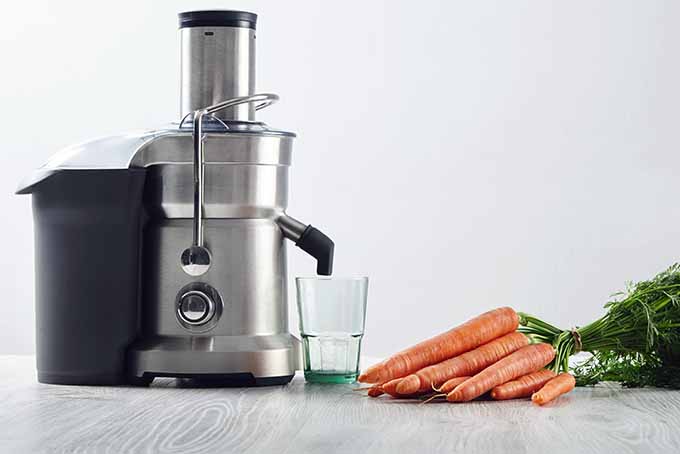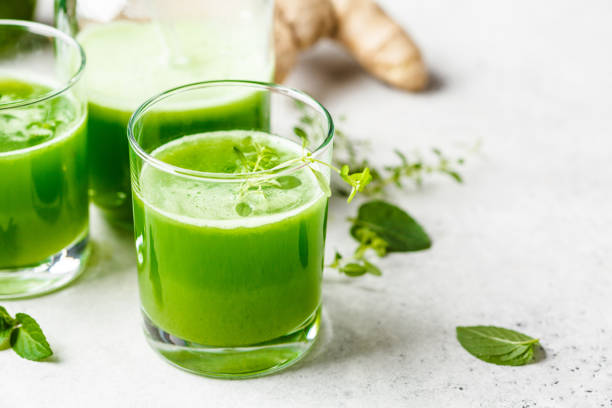It is possible to make your own juices at home, which can help you get more nutrients. You may also have heard that certain blends are more nutritious than others.
Juicing, as with many appliances, can remove the majority of the fiber in fresh produce. This has both positive and negative sides.
This is a good thing because you can probably eat a lot more fruits and vegetables in one go than if you were to eat them whole. It also means that you will be getting more vitamins and minerals.
However, the downside is that dietary fiber can cause sugar spikes and insulin spikes.
Many juice enthusiasts advocate for avoiding sweet vegetables like carrots and beets and instead opt for lower-sugar options, which are often green. (But not always as with this delicious and healthy V8-style tomato juice). For beginners, this can prove difficult if they aren’t used to the taste.
Here are some ideas to help you get started. This recipe can be easily adapted so that you can gradually introduce leafy greens.
The sweetness of carrots, apples and other fruits still provides many nutrients. It’s not as if you have added corn syrup or empty-calorie refined sugar to your soda.
You will become more familiar with the taste and reduce the amount of sweeter items. Increase the amounts of spinach, Mizuna, and kale, and add other green goodies.
In no time, you’ll be a professional!
DO NOT SKIP DINNER (OR LUNCH)
Juicing is not meant to replace a meal.
There are many cleanses that advocate for liquid diets for certain meals. However, nutritionists and juicing advocates recommend that homemade juices containing products should not be used as a substitute for healthy breakfast, lunch, or dinner.
Expert nutritionist Shira Lenchewski, RD at Laurenconrad.com, says that you should consume vegetable juice with an empty stomach to maximize its nutritional benefits. However, you should consider this a supplement to a healthy diet and not a reason to skip a meal.
To vary the vitamins and mineral content of your daily juice, you can rotate the ingredients. You should plan to eat about 30 minutes after you have finished sipping.
If I feel particularly ambitious, I love to do a workout in my living area and then make green juice. After I have finished my drink, I will take a shower and then enjoy a light, protein-rich meal.
Although I can’t claim that I am following this routine as frequently as I would like to, I do enjoy my healthy beverage at the end of an hour of hard work.
PRODUCE SELECTION and PREP
Look out for vegetables and fruits that aren’t wilted, softened, or browned when choosing your ingredients. Be sure to remove any traces of them before you juice.
It is best to wash all ingredients before you use them. Although it may seem easier to cut your produce ahead of time so that you can throw it in the juicer, some nutrients will begin to lose their value as soon as they are picked.
Prewashed vegetables (like bagged lettuce) and those that are brought home from the grocery store and washed immediately after purchase tend to rot faster. It is better to wait to wash vegetables until they are ready to use.
SOME LEAFY GREENS ARE EXCELLENT FOR JUICING.
- Arugula
- Beet tops
- Chard
- Collards
- Dandelion
- Kale
- Kohlrabi
- Mizuna (a.k.a. Japanese mustard green (also known as Mizuna)
- Mustard
- Radish leaves
- Spinach
- Turnip greens
CARROTS: WHAT’S UP, DOC?
This juice is something that every bunny would love. Although they contain a lot of sugar, the carrots in this juice are rich in a variety of nutrients.
GENERAL TIPS
You can wash off dirt and even peel your carrots prior to juicing. However, a good scrub with a veggie brush is sufficient.
Fresh carrots must be firm and crunchy without any soft spots, cuts, or blemishes. You can extend the shelf life of your fresh carrots by wrapping them in a damp paper towel or placing them in a refrigerator bin.
POTENTIAL HEALTH BENEFITS
Beta carotene, a carotenoid found in carrots, gives carrots their bright orange color and acts as an antioxidant. (Note: Anthocyanins and lutein are responsible for some carrots’ purple or red hues. However, both act as antioxidants.
- Protective measures against cardiovascular disease
- Colon cancer cells can be stopped from growing
- Promote eye health
A GREAT SOURCE OF:
- Vitamin A
- Vitamin C
- Vitamin K
- Potassium
A GOOD SOURCE OF:
- Thiamin (Vitamin B1)
- Niacin (Vitamin B3)
- Vitamin B6
- Folate
- Manganese
LETTUCE BRIEFLY DISCUSSES LEAFY GREEN NUTRITION
GENERAL TIPS
Leafy greens such as lettuce should be purchased at their peak freshness. If possible, it is best to get them from a local source. Before juicing, remove any brown ends, squishy or damaged leaves, as well as outer leaves that are yellowed or with whole leaves.
Before you juice, wash your hands well to get rid of any dirt, grit, and sand.
Juicing kale is a great way to make kale chips or veggie saute. There’s no need for any prep work – even the tough stems, you can just throw them in the juicer.
For harder leaves such as kale, chard, and collards, ensure they have a rich and deep color and firm stems.
All types of leafy greens that have been kept moist and cool in storage prior to being sold (if not picked directly from the field or garden) have the best taste, texture, and nutritional content.
For approximately 3-5 days, greens can be kept wrapped in plastic bags in the crisper box of the refrigerator.
POTENTIAL HEALTH BENEFITS FROM RED LEAF LETTUCE
You can choose from many types of leafy greens, but Red Lettuce is recommended for this starter juice. It has a mild taste, rich color, and high nutritional density.
- Promotes eye health
- Promotes healthy skin
- Blood clotting agent
- Helps to maintain bone density
- It might help prevent arterial hardening
- Immune support
A GREAT SOURCE OF:
- Vitamin A
- Vitamin C
- Vitamin K
- Thiamin (Vitamin B1)
- Riboflavin (Vitamin B2)
- Vitamin B6
- Folate
- Iron
- Potassium
- Manganese
A GOOD SOURCE OF:
- Calcium
- Magnesium
- Phosphorus
- Selenium
KALE – POTENTIAL HEALTH BENEFITS
Kale is a popular vegetable these days. It tastes great and is good for you. This healthy, cruciferous vegetable is rich in chlorophyll and has a mild taste compared to other leafy vegetables.
It contains two g of protein per cup and good amounts of omega-3s. This makes it a great choice for post-workout.
- Reduced risk of prostate, bladder, colon, colon, ovary, and prostate cancer
- It helps to detoxify the body
- Lowers cholesterol
A GREAT SOURCE OF:
- Vitamin A
- Vitamin C
- Vitamin K
- Vitamin B6
- Calcium
- Potassium
- Copper
- Manganese
GOOD SOURCE OF:
- Protein
- Thiamin (Vitamin B1)
- Riboflavin (Vitamin B2)
- Folate
- Iron
- Magnesium
- Phosphorus
This recipe is great for those who are new to healthy green juice. You can experiment with different ingredients by making your own blend of apple juice and spinach or our apple beet carrot juice.
You will become more familiar with the taste of fresh greens as you get older. As a result, you can decrease the number of sweet carrots and apples and increase the number of leafy vegetables.



